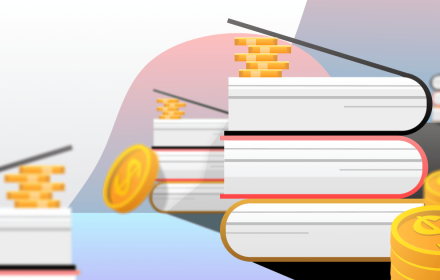When you are stuck in arrears, it often seems like there is no way out. Banks and creditors demand payments, interest rates rise, and only one thought comes to mind: how to get out of debt? The solution begins with the simplest thing: recognizing the problem. If you ignore the situation, it can lead to even higher fines and an increase in total debt.
1. Recognizing the problem: the first step to financial stability
First, make a list of all your financial obligations: consumer loans, credit card debts, mortgages, and other expenses. It is important to highlight the most urgent problems. For example, a Sberbank credit card with a limit of 100,000 rubles and an interest rate of 30% per year requires special attention, because interest rates here are rising daily. A similar situation applies to microcredits, where interest rates can reach 500 percent per year, and even small amounts can grow into large debts.
By categorizing the contracts you have signed, you can more easily determine which ones to start and which ones to postpone. For example, if the list contains a VTB car contract for 500,000 rubles with a monthly installment of 20,000 rubles and an interest rate of 15%, then this requires less attention compared to a credit card. Once you have identified your priorities, you can start planning the next steps.
It is very important that you analyze your own expenses and income. If you spend about 30,000 rubles per month on non-essential purchases or entertainment, you can reduce the amount to redistribute money and pay off your obligations.
2. Understanding Finances: Analyzing Your Debts and Payments
 Once you have identified the problem, you need to analyze your finances. To understand how to get out of debt, it is important to understand how loans work, what interest rates are charged, and what the structure of arrears is. For a thorough analysis, a detailed table should be made with the following data:
Once you have identified the problem, you need to analyze your finances. To understand how to get out of debt, it is important to understand how loans work, what interest rates are charged, and what the structure of arrears is. For a thorough analysis, a detailed table should be made with the following data:
- Debt amount. Specify the exact amount: 150,000 rubles for a T-Bank credit card or 800,000 rubles for a mortgage from Gazprombank.
- Interest rates. For example, the mortgage interest rate is 12% per annum, and for microloans it can be up to 500% per annum.
- Minimum payments: For a credit card, the minimum payment is 5,000 rubles, and for a car loan from Rosselkhozbank – 20,000 rubles per month.
- Total due date. It is important to calculate how much you need to pay each month to pay off your debt faster.
It is also important to analyze expenses. Each category requires attention: transportation, supplies, food, medical care. For example, if you spend 10,000 rubles on utilities per month, it may be worth analyzing the rates and looking for opportunities to save. By making a detailed list of expenses, you can determine in which areas costs can be saved.
3. How to create a debt-free plan: a strategy for everyone
To understand how to get out of debt, it is necessary to make a clear and detailed plan. The main rule is: you can’t try to solve everything at once. Attention should be focused on the most problematic areas, that is, on those that have to be paid off first because of high interest rates.
Snowball method
It is advisable to use the snowball method: first pay off the smallest obligations, and then gradually move on to larger ones. For this purpose, additional sources of income can be developed. Anyone who is engaged in programming or design can independently carry out several additional projects. If you own a car, this is a great way to earn some extra money as a taxi or delivery driver. An additional amount of 10,000 to 20,000 rubles per month can speed up the process and quickly put you on a stable financial path.
Refinancing
Next, you should consider the options for refinancing. For example, if you have two loans, one of which is an Alfa Bank card and the other is a consumer loan from Sberbank, it may be wise to merge them into one product with more favorable terms. For example, by reducing the interest rate to 15% per annum.
4. Reduce your debt burden: how to pay off loans faster
To get out of debt faster, it is not only important to cut back, but also to work on reducing your financial burden. The most important step is to replace existing high-quality products. It is worth using all possible means to close them.
At this stage, it is also important to consider the possibility of restructuring overdue debts. For example, if a VTB car loan cannot be repaid on the desired date, you can contact the bank and ask for an extension of the repayment period or a reduction in monthly payments. This will allow financial resources to be redistributed to other, more urgent obligations.
5. Negotiations with the bank: How to reach an agreement on a loan restructuring?
Do not be afraid to negotiate with banks. If you have high debts, it is important to inquire about the solutions offered by your financial institution. When the financial situation worsens and there is no way out of the debt crisis, it is important to learn to negotiate wisely. Often it is not in the interest of banks to lose a client.
Before talking to a broker, it is important to have all the necessary information about your income, expenses and payments due. For example, if you have taken a car loan of 200,000 rubles from Gazprombank and the payments on your credit card and mortgage are a heavy burden on your budget, it is worth offering the bank a payment reduction program. Do not be afraid to ask for a longer repayment period or a lower interest rate.
Often banks come together to reduce the interest rate or change the terms if the client shows that he or she is willing and able to meet his or her obligations. However, in the current reality, they find it difficult to make payments under the old terms.
Debt Reduction Myths: What Not to Do and Why
Many people who find themselves in financial difficulties mistakenly believe that the solution lies in taking out a new loan to pay off old debts. This creates a credit cycle in which new products are simply stacked on top of each other, further increasing the burden. I don’t think this is the way to get out of debt.
Instead, focus on refinancing, restructuring, and reducing costs. This will give you long-term stability and the ability to solve problems without creating new obligations.
Conclusion
 To understand how to get out of debt, you need to make a clear plan, tackle your debts, optimize your expenses, and think about additional sources of income. The most important thing is that you are not afraid to admit the problem and start solving it.
To understand how to get out of debt, you need to make a clear plan, tackle your debts, optimize your expenses, and think about additional sources of income. The most important thing is that you are not afraid to admit the problem and start solving it.
 en
en  ru
ru  de
de  ar
ar  es
es  nl
nl  hi
hi  fr
fr  it
it  pt
pt  el
el 



